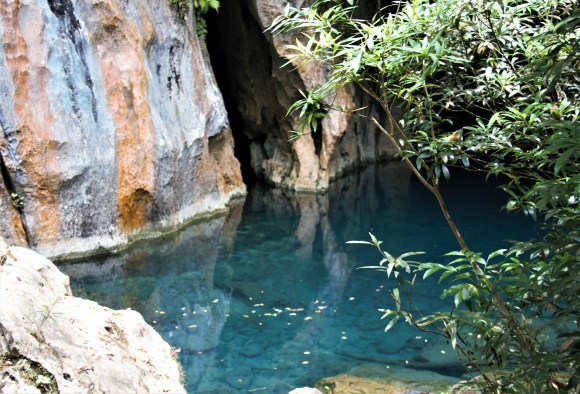Xin chào from Phong Nha,
We’re in Phong Nha, in the province of Quảng Binh in the north of the country. We’re here to see the fabled Phong Nha caves; roughly 400, mostly limestone caves, and still discovering more every dry season. It’s a very picturesque valley but there are plenty of reminders that this was a theatre of war.
Our host is a local organisation rejoicing under the name of Jungle Boss. It’s a hostel/homestay doubling as a cave tour company. At the beautifully appointed homestay, nothing has been neglected. Linda commented, “they really know their market”. The owner tells us, “we are all like a family”. This is the way Việtnamese businesses usually run. In the tourism business, it means hospitality is warm and competent.
The unexploded bombs acting as decorative bollards are less a sneer to a defeated foe, more a nod to a past which was brutal and violent but is well and truly – and thankfully -behind them. These are not sneering types. These are people who find it completely impossible to hold grudges.
Abandoned Valley
The military reminders keep coming. After we are assembled for a trek into Abandoned Valley, we climb into one of those dark, green, unstoppable Soviet-era troop carriers (unsynchronised first gear), don some camouflage army-issue boots and scramble up and over one small section of the Hồ Chí Minh Trail. This is beautiful countryside, and the two main speleological destinations are well worth the effort. The 150-metre swim deep into E-cave is a highlight.
Next day, Elephant Cave is also special but the swim (600 metres this time) into Trang An is today’s highlight. Tomorrow, Paradise Cave when most tourists have gone back to work after May Day. (Liberation Day and May Day are consecutive in Việt Nam.)

The Hồ Chí Minh Trail played a crucial role in the wars here. This was the supply line during the French and American wars. It was 2 000 kms long, from north to south. The soldiers would walk the road (in those days wide enough for a single vehicle only) at night time and through the jungles by day.

In recent years a number of spectacularly beautiful caves have been discovered in these limestone mountains. Three of the four biggest caves in the world are here in this region. Everybody who travels to Phong Nha comes back saying, “don’t miss those”. On this trip, we’ve managed to see some of the best, but we have made a promise to come back to camp overnight in Tiger Cave, which has two huge skylights, allowing the jungle to grow inside the cave; something to look forward to on another long weekend. The hospitality is guaranteed to be warm.
Hẹn Gặp Lại from Phong Nha
Greg
Other photos from hereabouts



















